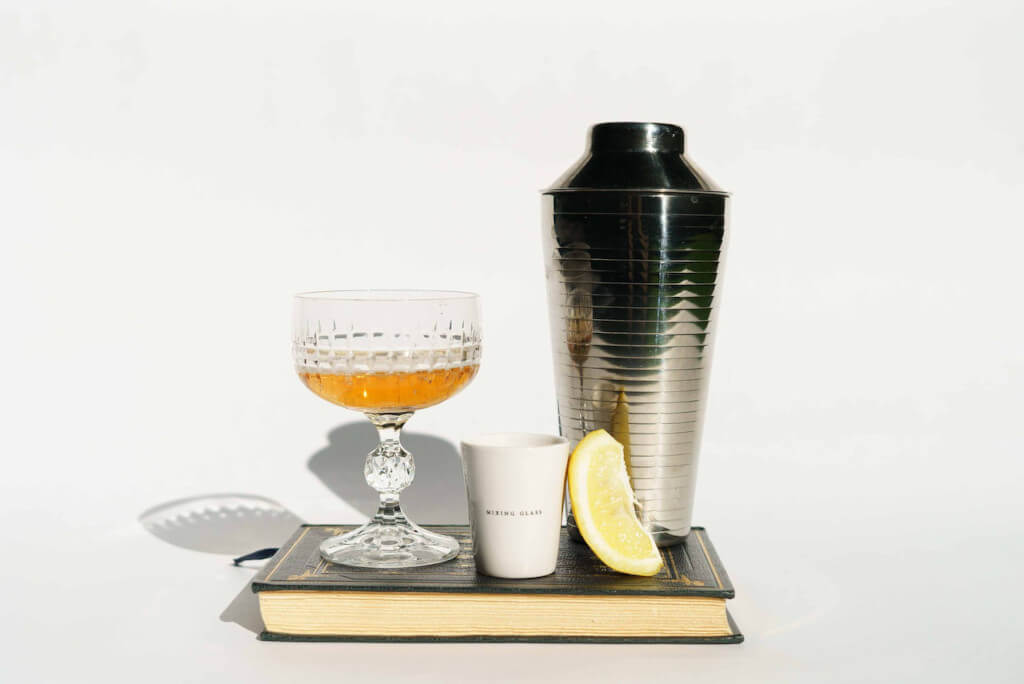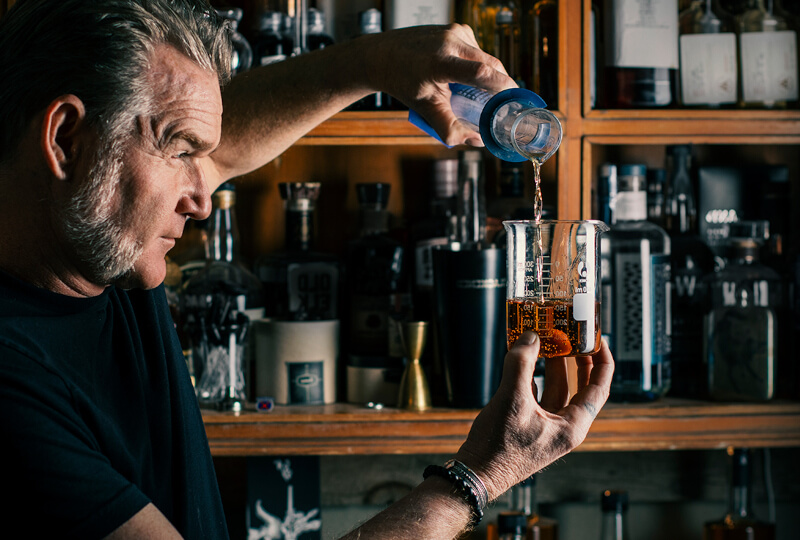Amidst this quest for knowledge when it comes to whiskey and bourbon, misconceptions proliferate, muddying the reality of whiskey wisdom. Enter Lew Bryson, a beacon of clarity in the fog of fallacies. In a candid interview with Forbes, this bourbon expert and prolific author tackles the myths that even the most seasoned aficionados sometimes fall for.
1. Bourbon Only Comes From Kentucky
One of the most enduring myths is that true bourbon can only call Kentucky its home. Bryson, with the precision of a historian and the patience of a teacher, dismantles this notion. He clarifies that while Kentucky is synonymous with bourbon due to its rich history and ideal distilling conditions, American law casts a wider net. Anywhere in the United States can birth bourbon, provided it adheres to the stringent production standards set forth by law. This revelation not only broadens our geographic scope but also invites us to appreciate the diversity of Bourbon production across the country.
2. The Name Game: Bourbon’s Origins
The tale of bourbon’s nomenclature is as murky as a barrel’s charred interior. Bryson, confronted with the theory that Bourbon County is the namesake, offers a scholar’s shrug. The truth, it seems, is lost to history. He proposes an alternative route to our modern term—Bourbon Street in New Orleans, a bustling marketplace for the spirit in its nascent days. This hypothesis not only challenges conventional wisdom but also paints a vivid picture of bourbon’s path from local delicacy to national treasure.
3. Bourbon Needs 4 Years to Mature
The belief that bourbon must age for a minimum of four years to earn its stripes is another fallacy Bryson eagerly debunks. The law requires only that bourbon rest in new, charred oak containers for its maturation process, without specifying a duration. This flexibility allows distillers to experiment with aging, crafting bourbons that range from youthful and vibrant to complex and mature. Bryson’s insight challenges us to reconsider our preconceptions about age and quality, emphasizing the artistry involved in bourbon production.
4. The Most Common Argument, Is it Whisky or Whiskey?
The “e” in whiskey might seem like a minor detail, but for enthusiasts, it’s a topic of heated debate. Bryson, ever the peacemaker, explains that the spelling difference between “whisky” and “whiskey” is a matter of preference rather than regulation. He cites Maker’s Mark, a bourbon that opts for the Scottish spelling, to illustrate his point. This discussion serves as a reminder of the rich tapestry of whiskey culture, where tradition and personal choice intermingle.
5. Is Jack Daniel’s a Bourbon or Not?
The question of whether Jack Daniel’s can be considered bourbon has ignited countless debates among whiskey enthusiasts and experts alike. At the heart of this discussion is a blend of legal definitions, traditional practices, and personal interpretations that make the debate as complex as the spirit itself.
Lew Bryson’s recounting of being ousted from a bar for challenging the conventional classification of Jack Daniel’s not as bourbon but as Tennessee Whiskey encapsulates the fervor with which people defend their stance on this issue. The technical criteria for bourbon—a distilled spirit made from a grain mixture that is at least 51% corn, aged in new, charred oak barrels, produced in the United States, and without any additives—seemingly include Jack Daniel’s within the bourbon family. Yet, it’s the Lincoln County Process, the additional step of filtering the spirit through charcoal before aging—that sets Jack Daniel’s apart and has been the linchpin of the argument for its distinction as Tennessee Whiskey.
This leads us to a broader debate on what constitutes authenticity and tradition in the whiskey world. On one side, purists argue that the unique charcoal mellowing process imparts a distinct flavor profile that differentiates Tennessee whiskey from its bourbon counterparts. They claim that this additional step, deeply rooted in the state’s distilling history, merits a separate classification that honors the regional heritage and craftsmanship.
On the flip side, the argument for classifying Jack Daniel’s as bourbon points to the fact that it meets all the federal regulations defining bourbon. The differentiation based on the charcoal filtering process, critics argue, is more about marketing and state pride than about substantial differences in the spirit’s character. They contend that many bourbons undergo various filtration processes without forfeiting their bourbon identity, suggesting that Tennessee whiskey could be seen as a subcategory of bourbon rather than a distinct category.
The debate is further complicated by:
- Legal definitions: While federal law defines the requirements for a whiskey to be called bourbon, Tennessee law specifies additional criteria for a spirit to earn the Tennessee Whiskey designation. This dichotomy fuels the debate, with legal standards offering differing perspectives.
- Historical context: The traditions and history of whiskey production in Tennessee, including the use of the Lincoln County Process, play a significant role in the argument for distinguishing Jack Daniel’s and other Tennessee Whiskeys from bourbon.
- Consumer perception: For many casual drinkers, the distinction may be less about the production process and more about the brand and regional identity. Jack Daniel’s branding as a Tennessee Whiskey helps it stand out in a crowded market and fosters a unique identity.
- Taste and flavor profile: Ultimately, some argue that the taste should be the deciding factor. The charcoal mellowing is said to give Tennessee Whiskey a smoother character, which, for some, is enough to warrant a separate classification.
6. The Term “Straight Bourbon”
The term “straight bourbon” often confuses even the most knowledgeable whiskey lovers. Bryson clarifies that “straight” refers to a bourbon aged for at least two years in new charred oak barrels, debunking the myth that it signifies a purer or more authentic form of bourbon. This explanation demystifies the labeling process, allowing drinkers to better understand what’s in their glass.
7. Does Bourbon Improve Over Time?
The assumption that bourbon, like fine wine, only gets better with age is a widely held belief that Bryson approaches with a nuanced perspective. He acknowledges that while some appreciate the deepening flavors that time imparts, others may prefer the vibrancy of younger spirits. The key, he suggests, is personal taste, encouraging whiskey enthusiasts to explore a range of ages and profiles to find their perfect match.
8. Where Bourbon Originated From
The creation of bourbon is often romanticized, with tales of singular geniuses and serendipitous discoveries. Bryson, with a laugh, dispels these myths, pointing to the multifaceted origins of bourbon that draw from Scots-Irish, central European, and cognac distilling techniques. This rich heritage, combined with the choice of maize for its abundance, underscores the collaborative and evolving nature of whiskey making.
9. The Superiority of Single Malt Scotch
Bryson addresses the contentious claim that single-malt Scotch is inherently superior to bourbon. With a dismissive wave, he labels this as snobbery, arguing that the complexity and stringent standards of bottled-in bond bourbon are a testament to its quality and craftsmanship. This stance not only challenges the hierarchy of spirits but also celebrates the diversity and excellence found within the whiskey world.
Lew Bryson’s dismissal of the claim as mere snobbery invites a deeper examination of the assumptions and biases that often underpin our preferences for one type of whiskey over another.
Single malt Scotch, revered for its complexity, tradition, and the meticulous process involved in its production, often holds a place of esteem among whiskey aficionados. This reverence is rooted in the history of Scotch production, characterized by its use of malted barley, distillation in pot stills, and aging in oak barrels for a minimum of three years. The result is a spirit rich in nuance, with a depth of flavor that reflects the unique characteristics of its region of origin.
Conversely, bourbon, with its bold flavors, versatility, and distinctive American heritage, represents a different facet of the whiskey spectrum. The “bottled in bond” designation, as Bryson notes, signifies bourbons that adhere to a rigorous set of standards: produced by one distillery in one distilling season, aged for a minimum of four years, and bottled at 100 proof. This certification is a mark of the spirit’s quality and the care taken in its production, challenging the notion that single malt Scotch inherently possesses a higher level of craftsmanship.




